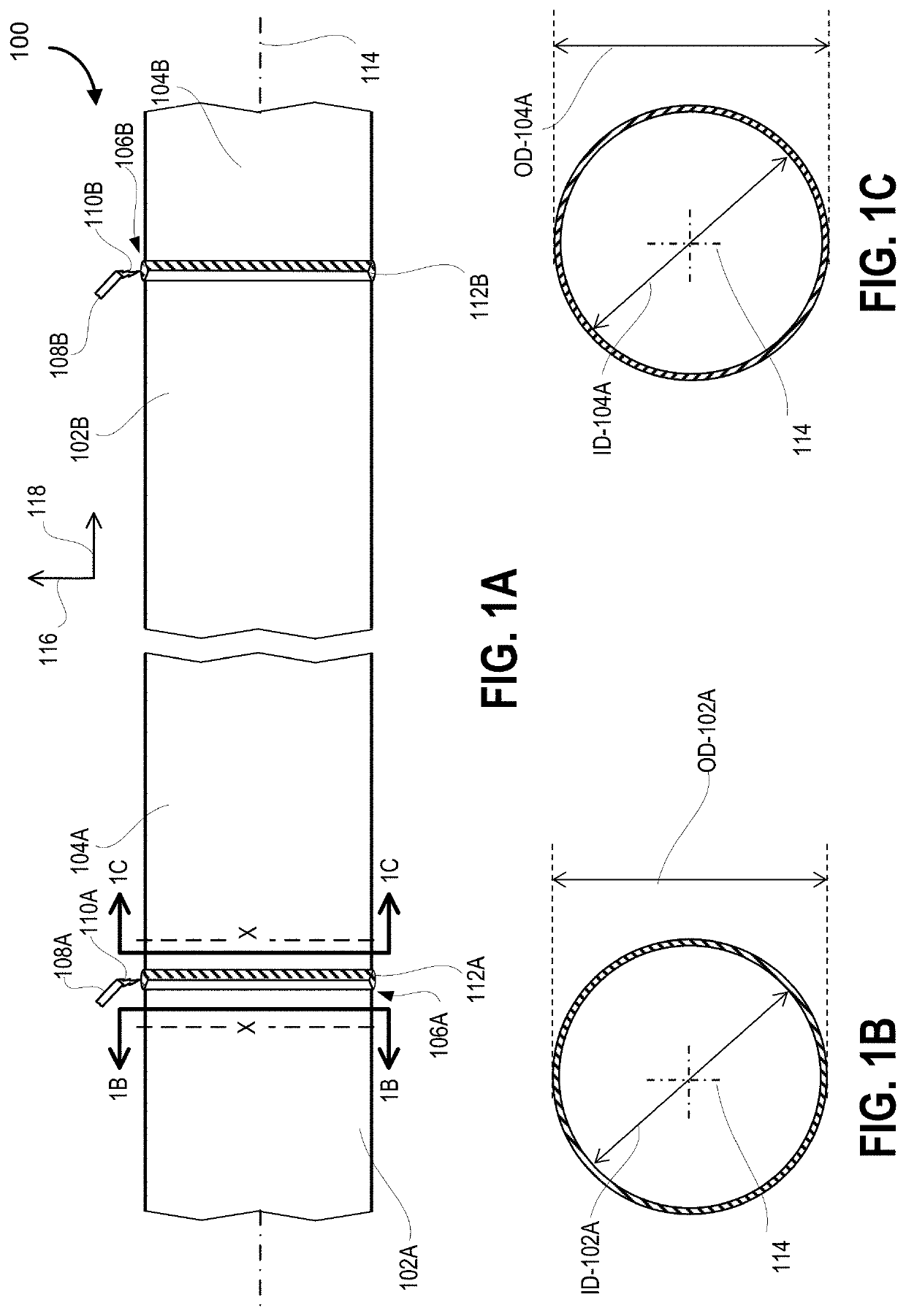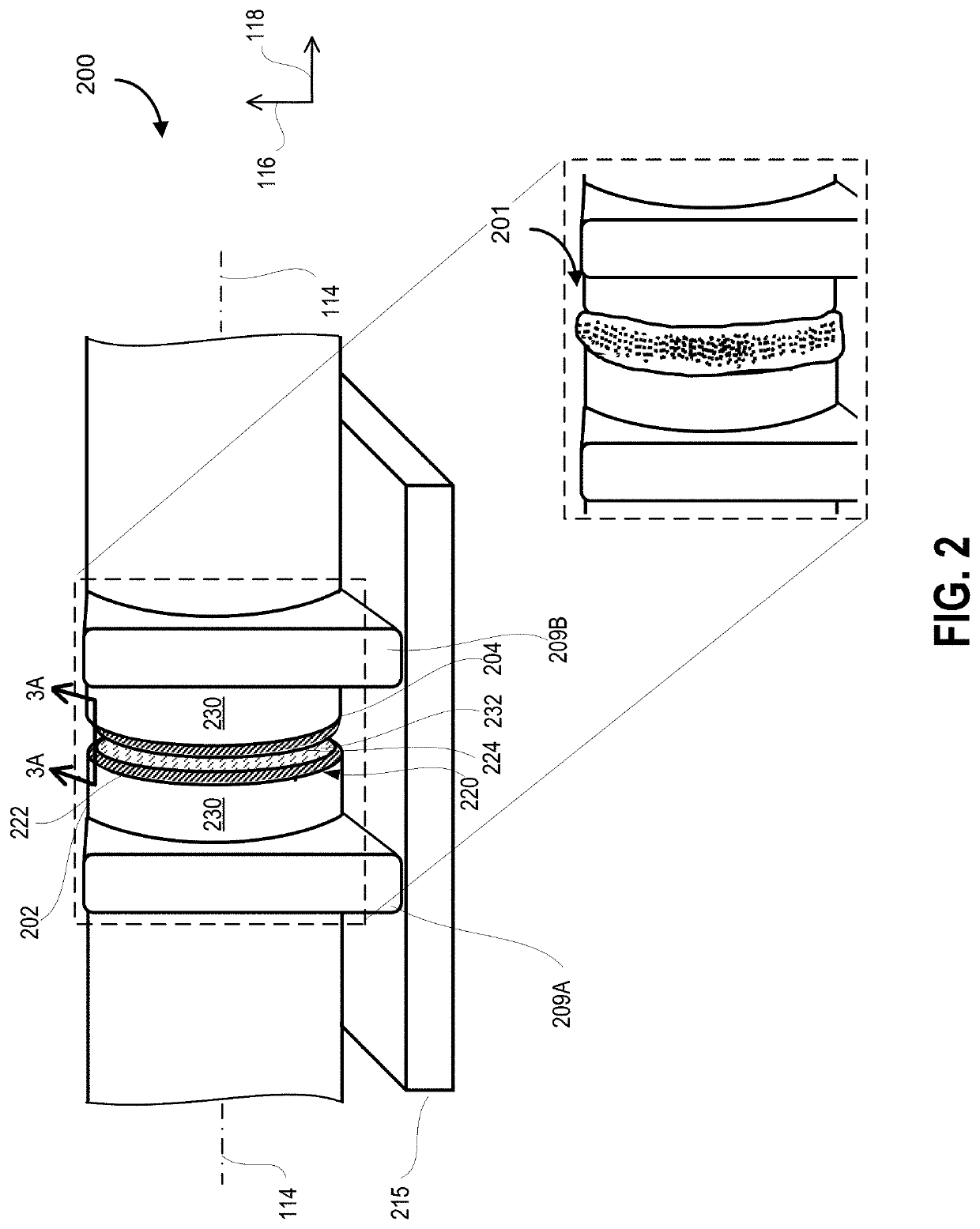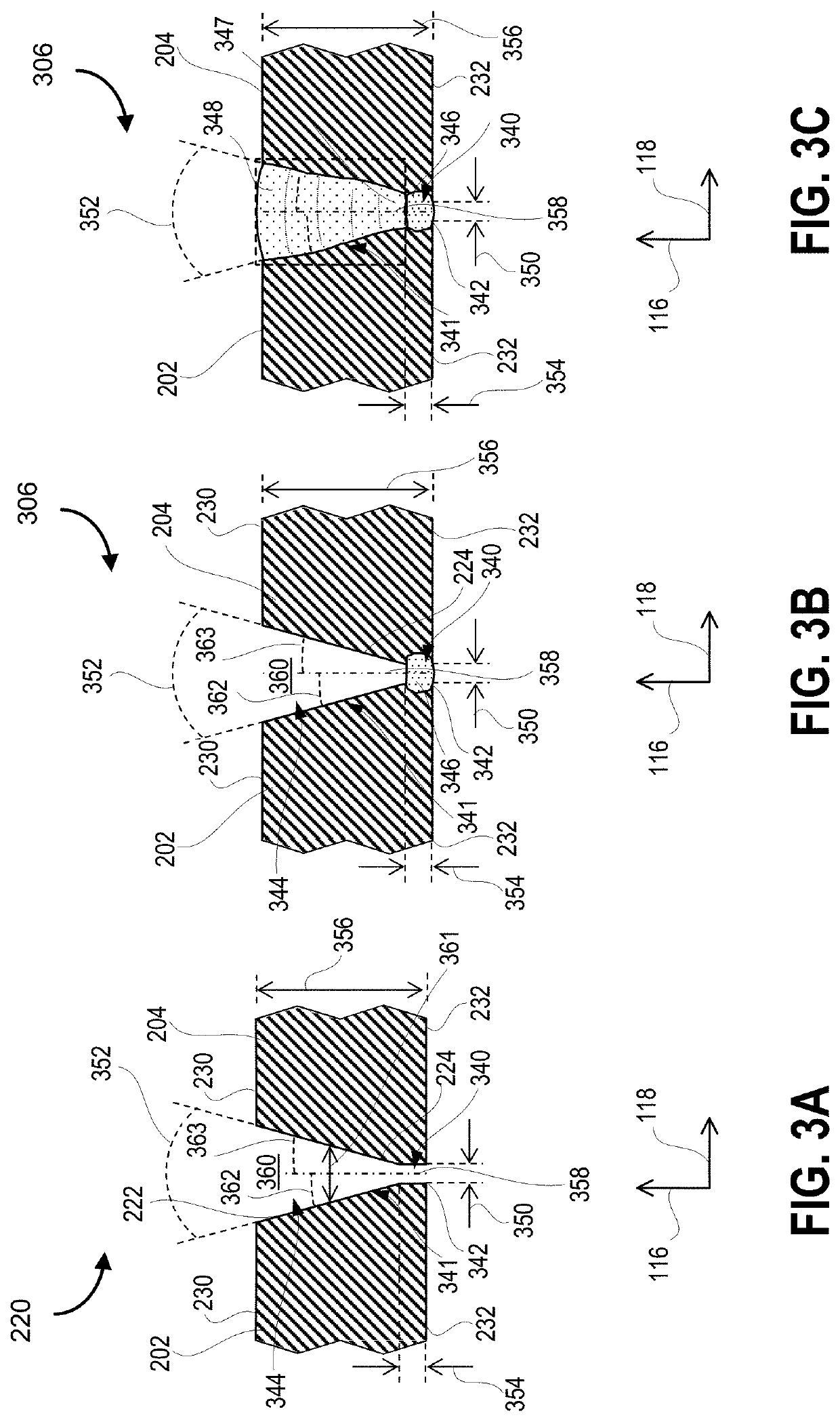System and method for manufacturing pipes
- Summary
- Abstract
- Description
- Claims
- Application Information
AI Technical Summary
Benefits of technology
Problems solved by technology
Method used
Image
Examples
Embodiment Construction
[0046]Pipelines are manufactured using one or more tubular sections butt welded together at axial ends. The butt weld includes a welding groove whose shape and geometry needs to be specified as part of a welding protocol. The welding groove typically extends around the pipe circumferentially. Pipes, methods of manufacturing them, and joints to be used therein are described below. The joints can be used for a pipeline, which can be a pipe assembly, and the pipeline can convey various objects, such as gas (e.g., natural gas or natural gas liquids), oil, water, biofuels, sewage, slurry, or fluids (e.g., sewage, steam), among others.
[0047]Pipes can be above ground, buried, under the sea, and may be subject to various stresses, such as high pressure, heat, corrosive conditions, adverse environmental conditions (e.g. heat, cold, humidity, wind, impacts), etc. The examples are not limited to pipes per se, and some embodiments may be related to any welding of joints.
[0048]An improved weldin...
PUM
| Property | Measurement | Unit |
|---|---|---|
| Length | aaaaa | aaaaa |
| Length | aaaaa | aaaaa |
| Length | aaaaa | aaaaa |
Abstract
Description
Claims
Application Information
 Login to View More
Login to View More - R&D
- Intellectual Property
- Life Sciences
- Materials
- Tech Scout
- Unparalleled Data Quality
- Higher Quality Content
- 60% Fewer Hallucinations
Browse by: Latest US Patents, China's latest patents, Technical Efficacy Thesaurus, Application Domain, Technology Topic, Popular Technical Reports.
© 2025 PatSnap. All rights reserved.Legal|Privacy policy|Modern Slavery Act Transparency Statement|Sitemap|About US| Contact US: help@patsnap.com



